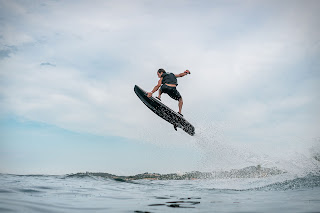DAILY INNOVATION BRIEF by Maryanne Kane, Journalist
DAILY INNOVATION BRIEF
By Journalists Edward Kane & Maryanne Kane
DARPA's WIRELESS INTERNET FOR ENERGY
- DARPA, the US Defense Department's Advanced Research Projects Agency, and Raytheon are developing a wireless internet for energy delivery. It's being developed for US military energy needs but has significant potential to go into everyday use for consumers and business. Here's what we know:
- Called POWER or the Persistent Optical Wireless Energy Relay
- DARPA just awarded Raytheon $10 million to develop it
- It's a wireless internet network for energy distribution initially for the US military
- Purpose is to cut US military's dependence on fossil fuel delivery and storage
- Big deal because of the potential civilian utilization such as having "the cloud" recharge your batteries
- How it works:
- Uses unmanned aerial vehicles with laser power that has receiving and transmitting capabilities
- Starts by beaming energy from a ground source to a POWER drone
- Drone relays the power to an intended destination like a facility or piece of military equipment
- DARPA wants this energy web to service the military 24/7 in the air, on the land and sea
- Bottom-line: the development of this network by DARPA could revolutionize the global distribution of energy
- DARPA has a distinguished history of developing innovations for the military that go mainstream like the internet and GPS.
ARE YOU BETTER LOOKING IN THE EYES OF THE INTOXICATED?
- Scientists at the University of Portsmouth (UK) tested this popular theory. Here's what we know:
- Beer Goggles have been called the phenomenon of seeing people more attractive than they really are after a few drinks
- University of Portsmouth scientists questioned nearly 100 men and women in a pub to see how they rate looks after a few drinks
- The findings:
- Heavily intoxicated people were less capable of distinguishing naturally unsymmetrical from perfectly symmetrical faces than more sober people. (Existing research indicates that sober people value a symmetrical face as attractive in others.)
- Alcohol use impairs detection of symmetry but does not impact facial attraction judgments
- While intoxicated, participants rated natural-faced photos more attractive than unsymmetrical ones, with a strong female bias for natural.
- Bottom-line: if you're not in a pub and want to impress, better wait outside the eye doctor's office and hope she dilated the eyes of some patients.




.jpg)
.jpg)
%20(1)%20(1)%20(3)%20(2)%20(2).jpg)


Comments
Post a Comment